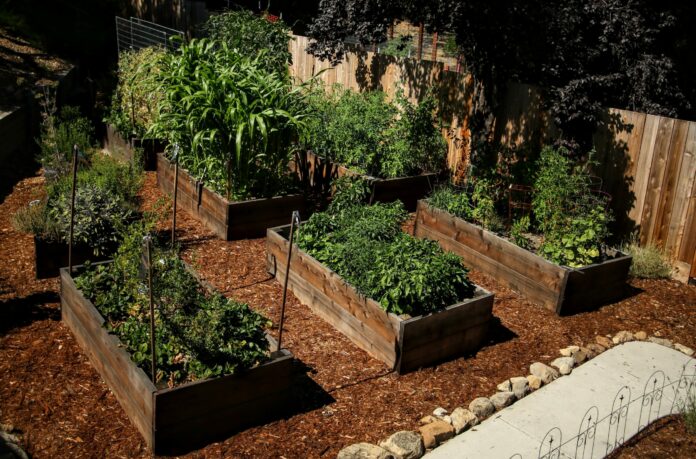I know many people who wait until the beginning of May to start their vegetable gardens for the summer. Conditions make not be right for them to grow cool season vegetables like beets, cabbage, cauliflower, kale, lettuce, unions, radish and spinach. Those plants don’t mind cold soil and chilly weather. But it you’ve been waiting for the perfect time to plant those scrumptious tomatoes you crave- wait no more. And if you plan your garden right you can still grow some of the cool season crops in the shade of your other sun lovers.
Crops that prefer night temps of 55 degrees and over are tomatoes bell peppers, corn beans, squash, cucumber, muskmelon and pumpkin. Distinctly warm weather, long season crops that need temperatures in the 70’s are watermelon, eggplant and chilies.
Rotate the beds when planting your vegetables to avoid a build up of diseases and insects that can survive in the soil or on plant residue. Don’t plant the same or closely related vegetables where they grew in the last 2-3 years.
Pay attention to the watering needs of each kind of plant, otherwise you might plant high water use vegetables beside ones that need need less water. This can not only waste water but can actually harm plants. A good guidelines is to group plants by how big they get and how fast they grow. The bigger and faster they grow, the more water they’ll use. Plant heavy water users at one end of the garden, light users at the other.
For instance, plant shallow rooted beets, bush beans, carrots, lettuce, spinach, radishes and other greens together as they grow at about the same rate and use similar amounts of water. Corn, cucumbers, melons, tomatoes and squash combine well as they all grow rapidly and need lots of water. Another tip is not to mix new (successive) plantings of carrots, lettuce and other crops with existing ones as water use changes as the plants mature.
Vegetables at maturity that root over 48 inches deep are tomatoes, watermelon, pumpkin, winter squash, asparagus, sweet potatoes and artichoke. When watering wet your soil to this depth to keep them happy. Moderately deep rooting veggies -36-48 inches- are beet, beans, carrots, chard, cucumber, eggplant, muskmelon, peas, pepper, summer squash and turnip. Shallow rooting -18 – 24 inches – veggies include broccoli, cabbage, celery, corn, garlic, lettuce, onion, parsley, potato, radish and spinach. Water less if your plants aren’t full grown yet.
Vegetables in containers are a great solution if you don’t have much space in the ground to devote to them. Pots warm up quicker in the spring, too. Just about anything that grows in the ground can also grow in a pot or half barrel. This includes vegetables, herbs and even small fruit trees.
Small plants like lettuces, spinach, Swiss chard and herbs grow nicely in smaller pots near the back door while large edibles like tomatoes, peppers, eggplant, squash, cucumbers and melons need more room like a half barrel or large 7 or 5 gallon pots.
It’s important to use fresh planing mix in your containers each year. Heavy producers need fresh nutrients and deplete the soil by the end of the season. Also feed your containers for the best tasting fruit and vegetables and water on a steady basis. Skip a day of watering when larger plants are at their peak and you can lose your crop. There’s no such thing as dry-farmed tomatoes in a container. Growing plants is containers is low maintenance. No weeding required and one of the easiest ways to success.
- Jan Nelson, a landscape designer and California certified nursery professional, will answer questions about gardening in the Santa Cruz Mountains. E-mail her at ja******@*ol.com, or visit www.jannelsonlandscapedesign.com.











